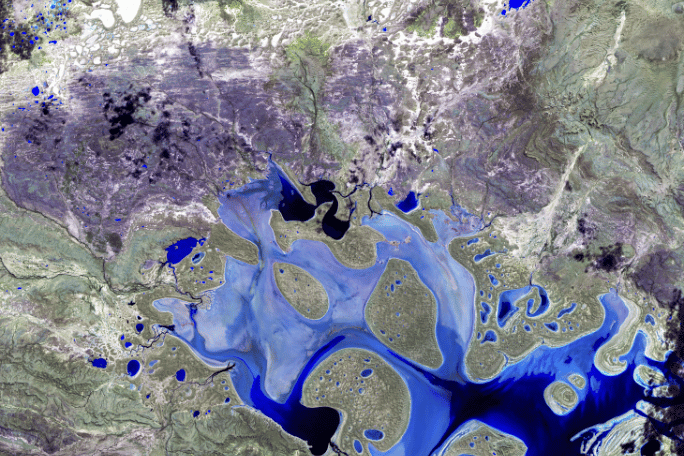Lesson summary
Students will explore how art can be seen as a form of social commentary, and how environmental artists can reflect the environmental sentiment of the time. Students will begin by looking at historical examples of art (including environmental art). They will then select a work of art that features nature or our environment from the past, one from the present, and then they will create one for an imagine future in 50 years time.
Learning intentions:
Students will...
- understand that art can be seen as a form of social commentary
- understand that art can tell us how people are thinking about our environment
- recognise the different ways artists have explored nature and the environment at different points in history.
Lesson guides and printables
Lesson details
Curriculum mapping
Australian Curriculum content descriptions:
Year 5 & 6 Visual Arts:
- Explore ideas and practices used by artists, including practices of Aboriginal and Torres Strait Islander artists, to represent different views, beliefs and opinions (ACAVAM114)
- Develop and apply techniques and processes when making their artworks (ACAVAM115)
- Plan the display of artworks to enhance their meaning for an audience (ACAVAM116)
- Explain how visual arts conventions communicate meaning by comparing artworks from different social, cultural and historical contexts, including Aboriginal and Torres Strait Islander artworks (ACAVAR117)
Year 5 History:
- Examine different viewpoints on actions, events, issues and phenomena in the past and present (ACHASSI099)
- Present ideas, findings, viewpoints and conclusions in a range of texts and modes that incorporate source materials, digital and non-digital representations and discipline-specific terms and conventions (ACHASSI105)
Year 6 History:
- Examine different viewpoints on actions, events, issues and phenomena in the past and present (ACHASSI127)
- Present ideas, findings, viewpoints and conclusions in a range of texts and modes that incorporate source materials, digital and non-digital representations and discipline-specific terms and conventions (ACHASSI133)
General capabilities: Critical and creative thinking
Syllabus Outcomes: VAS3.1, VAS3.2, VAS3.3, VAS3.4, HT3-5.
Time required: 2 x 48 mins
Level of teacher scaffolding: Medium – oversee activity and facilitate discussion
Resources required
- Internet access
- Student worksheets,
- Art materials


Welcome back!
Don't have an account yet?
Log in with:
By signing up to Cool.org you consent and agree to Cool's privacy policy to
store, manage and process your personal information. To read more, please see
our privacy policy here(Opens in new tab).
Create your free Cool.org account.
Many of our resources are free, with an option to upgrade to Cool+ for premium content.
Already have an account?
Sign up with:
By signing up to Cool.org you consent and agree to Cool's privacy policy to
store, manage and process your personal information. To read more, please see
our privacy policy here(Opens in new tab).